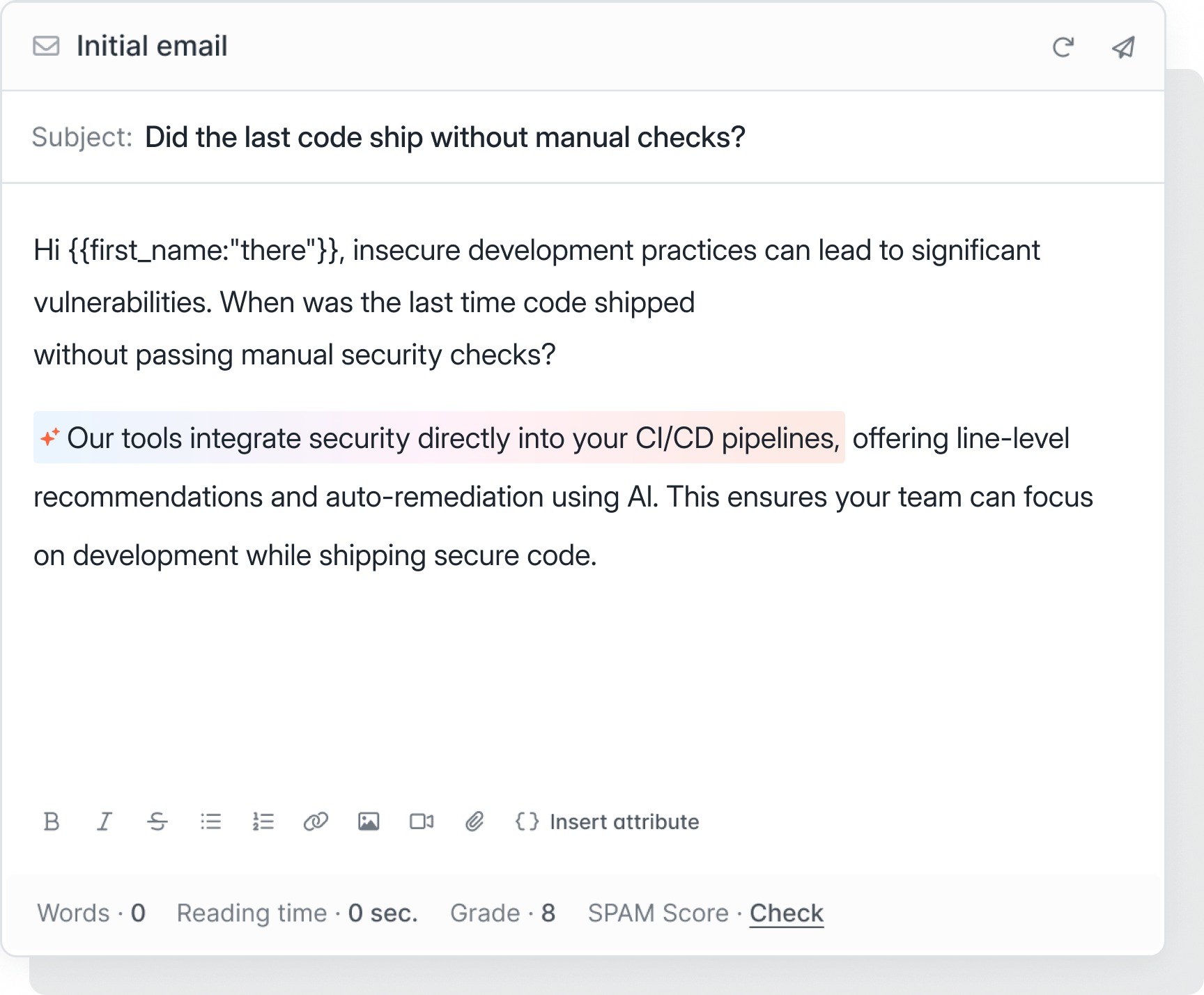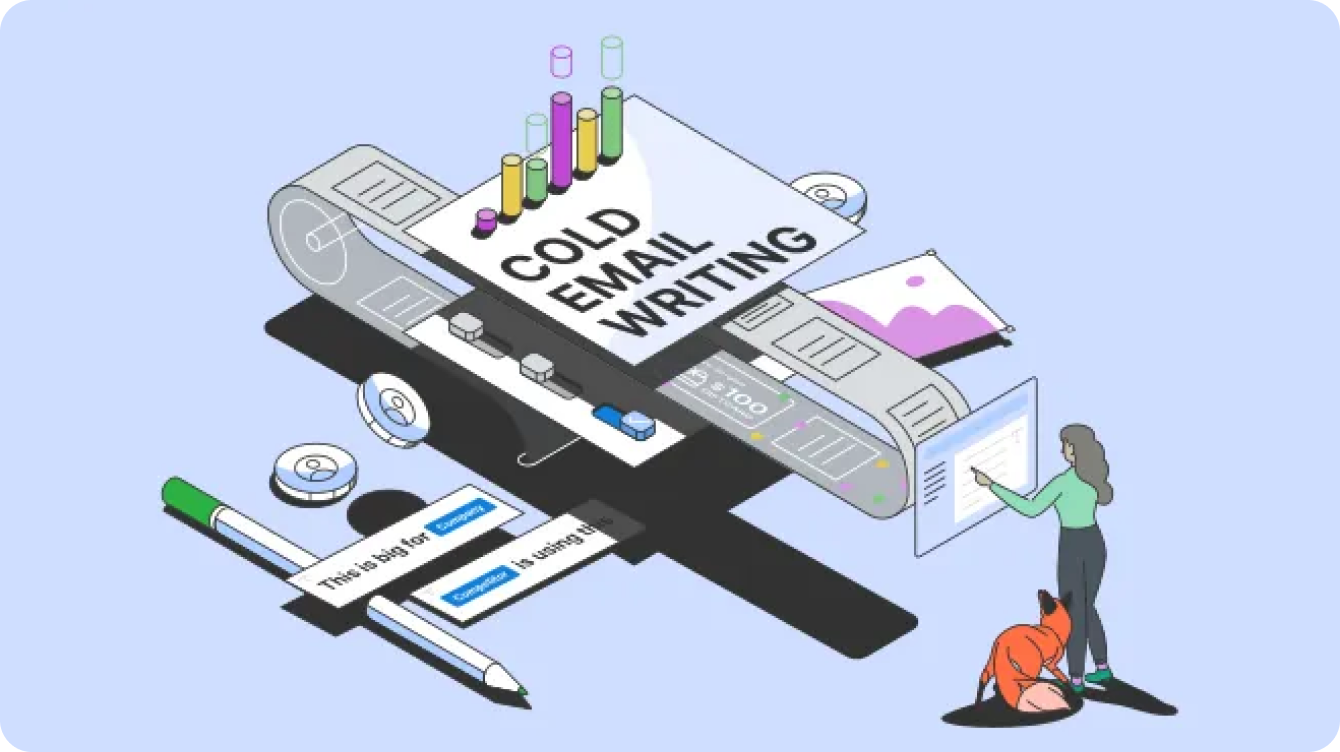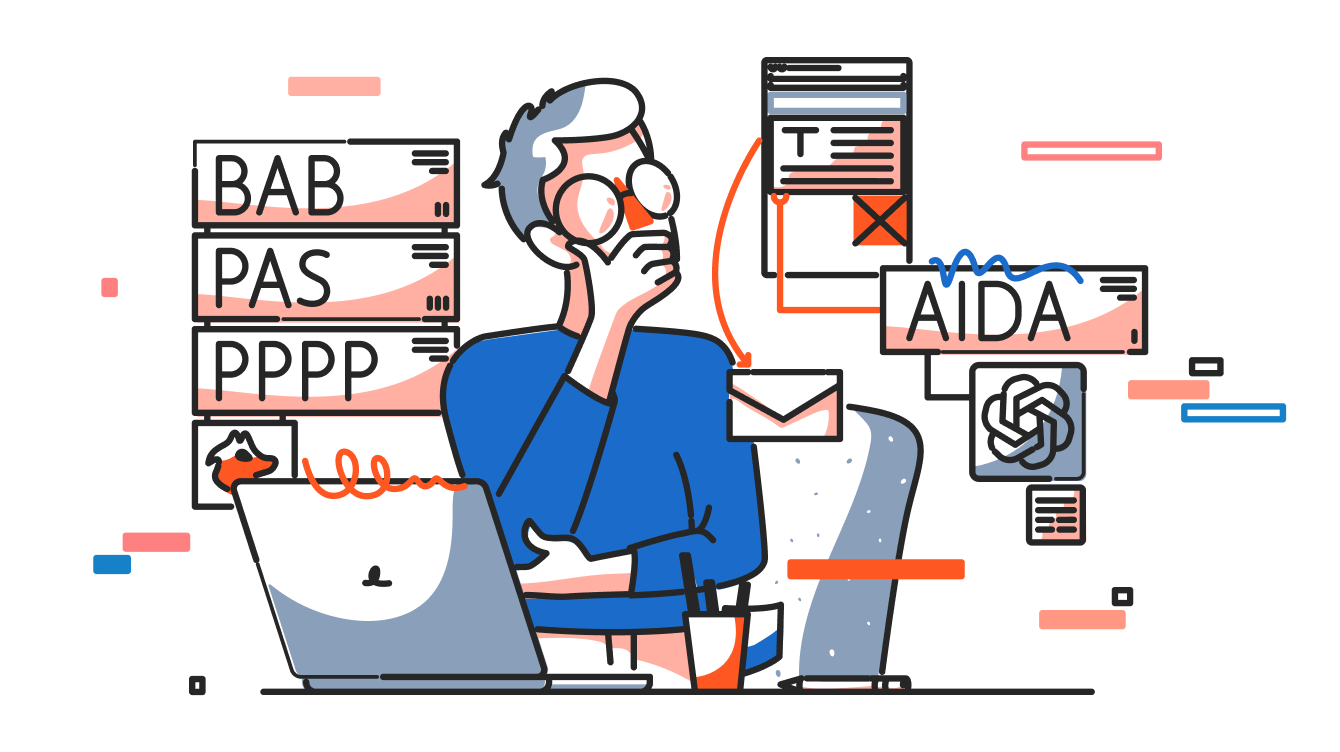The State of Cold Email In 2025
Cold email isn’t dead, but it is harder than ever.
The optimism of cold email as a channel is being met with poor emails.
Spray-and-pray tactics have collapsed.
The new way to win in cold email is: Relevance, trust, and personalization.

What Goes Into A Great Cold Email?
Writing a great cold email isn’t about any one factor.
It’s written for a specific recipient, and you have a solution they need to see.
A lot is said about the technical side of cold emailing, but little about what you need to get across in your email. We know the answer, and now you will too.
Half creativity, half science?
Great cold emails aren’t built on clever tricks or perfect templates - they succeed because the content is relevant, trustworthy, and personal to the recipient.
Relevance begins with verified data and targeted lists, ensuring every recipient feels like the message was meant for them.
Trustworthiness is about making it obvious that you’re human - clear contact details, transparent sourcing, and a simple unsubscribe process are a great start.
Personalization is about making your message mean something to the recipient.
These three principles form the foundation of effective outreach today. Whether you’re a founder, a marketer, or part of a growing sales team, they’re universal rules.

Cold outreach isn’t about booking a meeting with your first send. It’s about creating relevance and earning a reply.
How Do People Create Cold Emails?
GenAI and cold email templates make sending emails accessible to all.
But the increased access hasn’t brought higher quality.
The challenge remains finding the most effective way to write a great email...at scale.
Our data shows that while many professionals are experimenting with GenAI, the majority are still writing emails themselves.
Templates are the least used and least trusted.
With more founders, marketers, and salespeople choosing to go it alone, templates and external support are no longer the default choice for executing lead generation.
As GenAI becomes more adopted, those who are successful with lead generation will be those who follow the best practices in this guide.
The takeaway: lead generation emails fail when the method (AI, DIY, template, or agency) is prioritized over the fundamentals.
Success comes from using verified data, focusing on small audiences, and creating clear, trustworthy, and human-sounding messages.

Additional resources on writing cold emails
How To Make Your Cold Emails Relevant 101 How To Turn an Underperforming Campaign Into 10 Good Ones How To Write Great Subject LinesThe Telltale Signs of an AI Cold Email
More GenAI is leading to stale, repetitive content in inboxes.
The way that LLMs generate responses means that the majority of advice on cold emails creates a sea of lookalikes.
Your recipients are automatically scanning for AI red flags - and we have the data to prove it.
If few follow best practices, then adding AI will only make the problem worse.
As AI becomes more common, spam will skyrocket. Because GenAI tools, like ChatGPT and Claude, are built on a vast amount of publicly available content, where the advice on email is formulaic, overused, and avoids the best practices our data shows, your lead generation will suffer.
If you’re going to use GenAI, then you need to know how to avoid the mechanical red flags that instantly give AI away.
Recipients don’t care whether you used AI; they care if it reads like AI.
Stiff personalization, formal spelling, and formulaic structures break trust and make your message feel like spam. That’s why learning to spot and fix these patterns is critical.

AI itself isn’t a problem; lack of personalization is.Shivani Shah
Can B2B Professionals Spot AI?
When you use AI for email copywriting, your goal is to blend in, not stand out.
Your emails should be natural and create a connection with your recipient.
We put nine emails to the test to see if founders, marketers, and salespeople truly have a radar for AI cold emails (spoiler: they don’t).
Our survey reveals that people struggle to accurately identify when AI is being used. As AI becomes more prevalent, we must keep in mind that well-written emails, regardless of the author, will always prevail.
Even higher-performing industries, like Marketing, Technology, and Financial Services, could only guess correctly half the time. Sectors with less exposure to AI copywriting tools, such as Education and Manufacturing, struggled even more.
When people did correctly identify AI, their reasons were consistent: it sounded repetitive, overly formal, and formulaic. In other words, bad AI writing stands out; good AI writing blends in.
The takeaway is simple: if you apply best practices - starting with verified data, keeping messages personal, and avoiding mechanical AI red flags - your recipients won’t know (or care) that you used AI.
What they care about is whether the email feels relevant and worth their time.

Even the best-performing industries could only guess correctly half the time.
Will People Respond To AI Emails?
Two-thirds of surveyed decision makers don’t care if you use GenAI to write your email.
Yet, most founders, marketers, and salespeople say they’d respond negatively to an AI email.
So, what's behind this contradiction?
AI cold emails have a sender vs. recipient dilemma. 47% of B2B professionals (those experimenting with GenAI) said they’d be less likely to reply to an email if they thought it was AI-written.
That hesitation raises an interesting question - why would a sender of AI-generated emails be happy to send but not to receive?
Decision makers, the recipients of AI-generated emails, don’t share that hang-up.
In fact, 67% say they don’t mind if AI is used. For them, the difference isn’t about the source of the writing; it’s about whether the message feels relevant, credible, and worth replying to.
The implication is clear: Reluctance around AI sits more with the senders than the recipients.
If you’re writing cold emails, the blocker isn’t your prospect’s mindset - it’s your own.
You need to build confidence and comfort by using GenAI the right way: as a tool for scale and structure, applying best practices that ensure each email gives the human touch recipients need.

I am more annoyed by recognizable templates than by AI.Dr. Fio
How To Create Great AI Emails
If you’re going to use AI to generate your emails, you need to write concisely, ask questions, and above all, be human. Your emails don’t need to scream AI, and this is how.
Using GenAI well is going to make or break your lead generation.
AI can provide structure and speed, but without the right guardrails, it strips away the very things that make prospecting effective: relevance, trust, and a human touch.
That’s why you don’t need advanced prompt engineering, complicated workflows, or an agency.
What matters is consistently following a few simple rules, or what we call red and green flags.
This checklist will keep your copy sharp, personal, and aligned with your recipient’s real needs.
Think of it as your safety net: red flags to avoid so your emails don’t scream “AI,” and green flags to embrace so your outreach feels credible, distinct, and worth replying to.
Use AI as your drafting assistant, but ensure you use this checklist as a filter to ensure your message still feels human.

The Future Of AI Emails
Since 2022, the idea of go-to-market has been turned on its head. Skills once inaccessible - like copywriting - became attainable.
But the need to be thoughtful about how we leverage GenAI has equally increased.
The future is a question of how much you can automate while maintaining the personal touch that sets you apart.
Lead generation isn’t slowly evolving - it’s being fundamentally rewritten.
The workflows, metrics, and playbooks that defined the last decade are already breaking down.
Within the next three years, most cold emails will be AI-written.
The real question isn’t whether you’ll use AI - it’s whether you’ll use it well enough to stand out when everyone else does too.
1 Contact Discovery Is No Longer Manual
Building lists by hand is over. AI will verify, enrich, and segment contacts automatically.
Outreach teams that still rely on manual research will lose entire weeks of efficiency compared to competitors using real-time, AI-powered prospecting.
Verified data becomes the foundation of trust, and trust will be non-negotiable.
2 Campaigns Shrink, Scale Explodes
The 1,000-recipient email blast is dead.
Long live micro-campaigns at scale: 10–20-person lists, hyper-personalized in minutes, multiplied thousands of times over.
Send lists will decrease, but campaigns—and learnings—will take off.
3 Replies Replace Meetings as the Goal
The “book a meeting” mindset is outdated.
AI-assisted lead generation will optimize for a reply-first economy, sparking conversations instead of demanding calendar time.
Those early replies will fuel growth loops, not one-and-done transactions.
4 Deliverability Is Life or Death
Domain reputation is the new currency of outreach. Spam filters are more aggressive than ever, and AI can’t trick them.
One misstep, like a flagged campaign or a broken trust signal, and your inbox access vanishes.
Outreach leaders must treat deliverability with the same urgency as payroll. Without it, nothing else matters.
5 Human Guided AI
The best outreach won’t be written by AI alone or humans alone. It will be co-written: AI scaffolds speed and structure, humans inject tone, proof, and imperfection.
The emails that win will be those that don’t read like they came from a bot, but also don’t waste hours of human effort.
This isn’t a compromise; it’s a new creative class of cold email.
The road ahead isn’t about choosing between AI and authenticity, but about how you use them together.
Conclusion
Lead generation has never been harder, but leads still prefer it over LinkedIn and calls.
While 96% of your competition sends emails that erode trust and interest, using GenAI effectively gives you the opportunity to succeed at scale.
So, should you use AI? Absolutely. AI can already write emails as well as, or even better than, humans. But you need to guide it with insight, proof, and tone. Remember, AI is a tool, not a strategy.
Can recipients tell? Most of the time, no. Even when they think they can, they’re wrong as often as they’re right. We're in a world where AI emails are accepted, but few are worth reading. This is no different from the quality issue identified in Hunter's State of Cold Email 2025.
Recipients will only care if you get lazy. If you copy and paste an email from ChatGPT to a recipient, you'll lose them. They mind if your emails are generic, robotic, or unhelpful. The problem isn’t automation; it’s irrelevance.
How do you ensure outreach is good? By following the same timeless rules: start with verified data, write for well-segmented audiences, personalize beyond the obvious, and protect your deliverability like your reputation depends on it - because it does.
The path forward is hopeful.
Today’s lead generation requires discipline: smaller lists, sharper relevance, and better follow-ups.
Tomorrow’s world will be more exciting than ever: AI and humans working together to produce messages that are faster to create, smarter to deliver, and more human to read.
The paradox we began with is also the opportunity we end on: AI is writing better cold emails than humans, and your recipients can’t tell the difference.
The playing field is wide open.
If you embrace the technology thoughtfully, avoiding shortcuts, amplifying personalization, and leaning into co-creation, you’ll not only keep pace with the future of lead generation, you’ll shape it.




